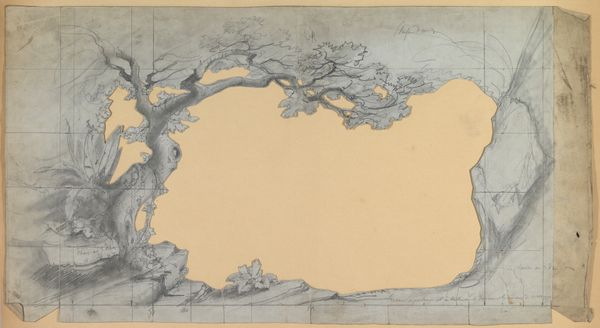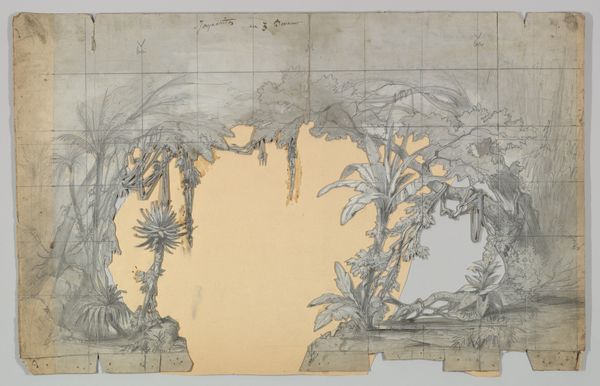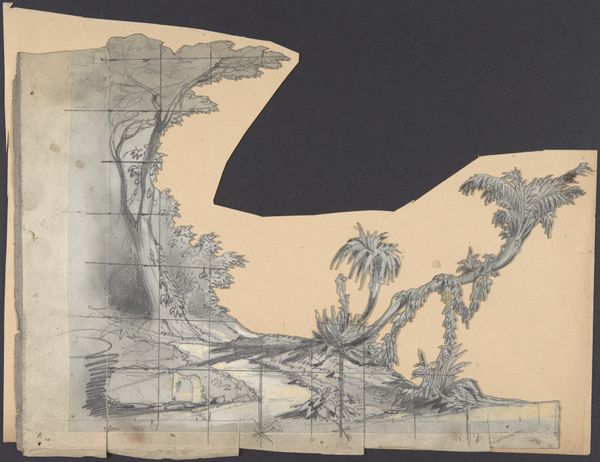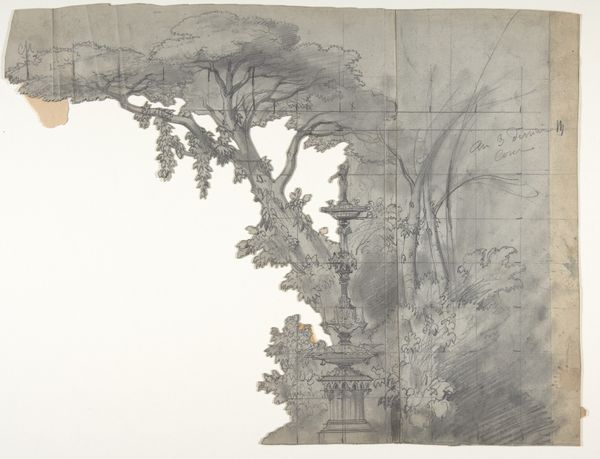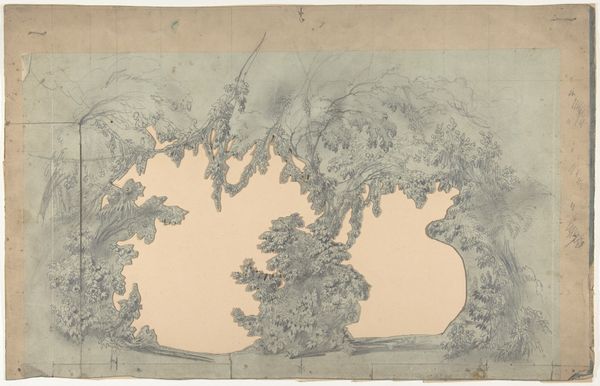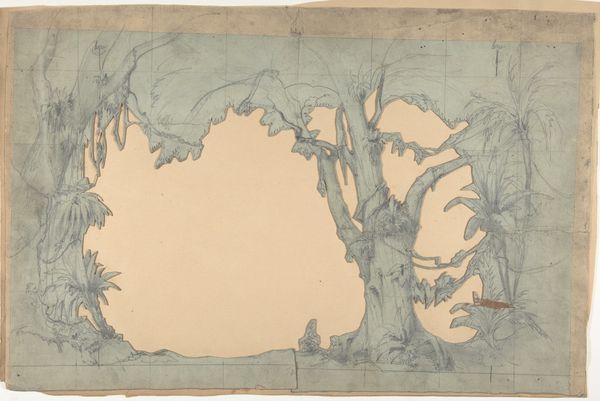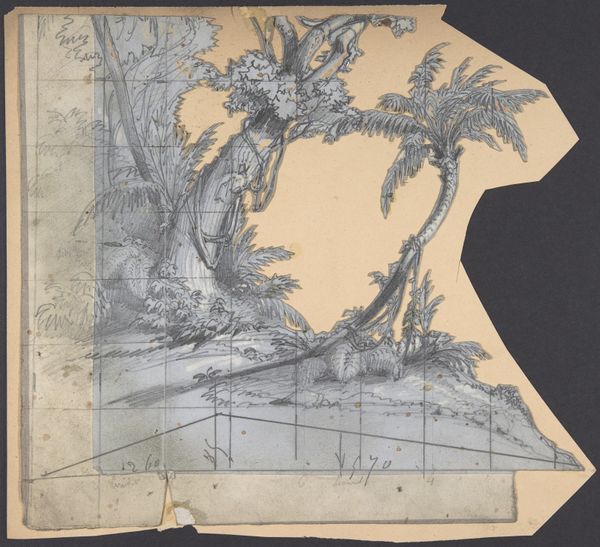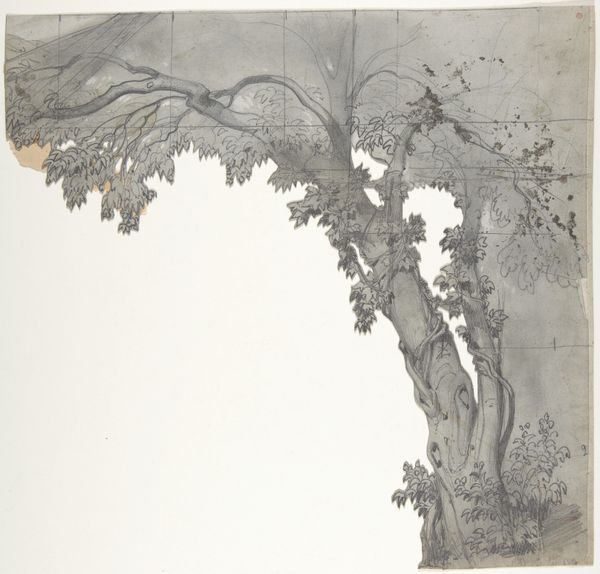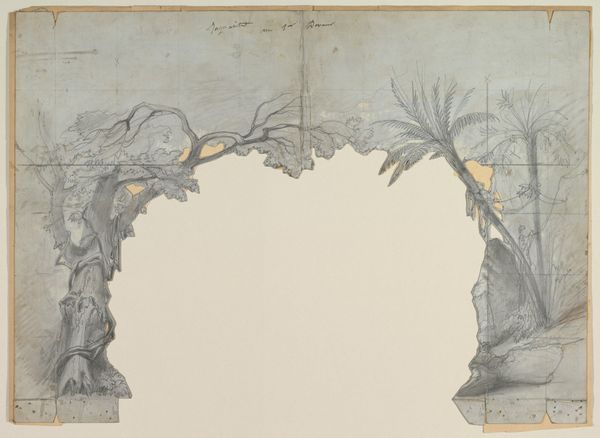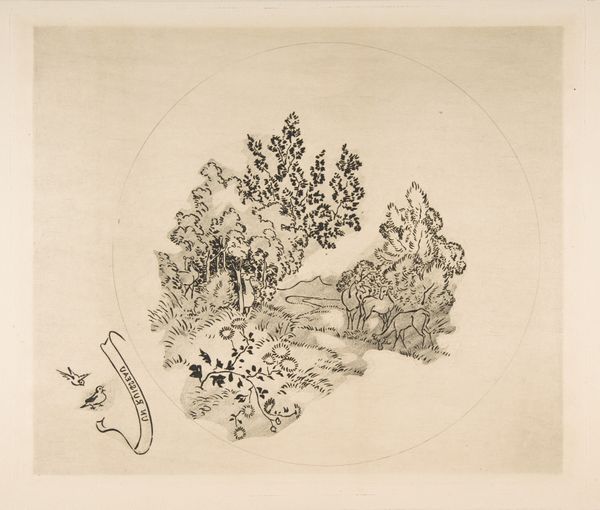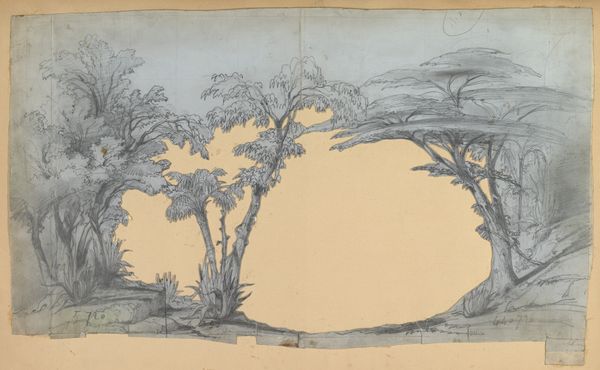
Copyright: Public Domain
Curator: I see a certain delicacy in this study. The skeletal form of the vegetation strikes a chord with the melancholy and picturesque sublime. Editor: This is Eugène Cicéri’s "Design for a Stage Set," created between 1825 and 1890. He employed pencil and colored pencil on paper for this piece, now held at the Metropolitan Museum of Art. Curator: Looking closely, one observes the material execution of the piece - the grid markings laid bare and informing its underlying structure; and the visible method of transferring from earlier ideas, revealing the iterative nature intrinsic in its process. A blueprint. Editor: Yes, the overlaid grid is not just a structural element. I believe that its strategic placement generates a spatial complexity – almost as if it exists between the imagined proscenium and the scene itself. Note, too, how the detailed foliage is juxtaposed with that very rigid geometric foundation. Curator: That sharp contrast interests me—revealing tension between organic and fabricated systems, while speaking to how representations such as these contributed greatly to the birth of industrial stagecraft throughout the nineteenth century, thus reflecting changing ideas related art, labor, and progress across various social spheres during this period! Editor: It's interesting how you're tying that into stagecraft advancements and related industrial revolutions in technology that enabled his creative expression while transforming societal perspectives about entertainment production, its reception by viewers who also may have held complex feelings reflecting larger sentiments around technology advancements more broadly beyond arts. Curator: I suppose ultimately this design represents a confluence of production considerations and romantic aesthetics informing art and labor, rather cleverly articulated within what might simply appear decorative work designed for simple entertainment. Editor: In retrospect it seems clear through your insightful observations concerning stage set materialization to explore shifting attitudes encompassing both beauty embodied by landscape's natural order but also how material consumption impacted societal appreciation around aesthetics and function.
Comments
No comments
Be the first to comment and join the conversation on the ultimate creative platform.
